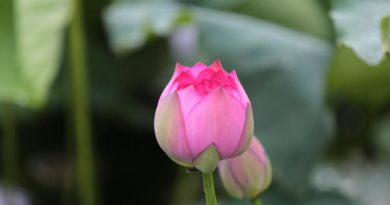Conduct, Concentration, And Intellect – Subha Sutta
INTRODUCTION TO THE SUBHA SUTTA
As this Sutta is almost word for word the same as the Sāmañña-phala, the question arises why it was considered advisable to include it in our collection as a separate Sutta. The chief difference is that the states of mind enumerated in the Sāmañña-phala as fruits of the life of a recluse are here divided under the three heads of sīla, samādhi, and paññā (conduct, concentration, and intelligence).
Samādhi has not yet been found in any Indian book older than the Piṭakas. And, as in them, it is used exclusively of a mental state, never in a concrete sense, its meaning is not easy to fix exactly. It is not the same as jhāna, which is a pre-Buddhistic term applied to four special forms of meditation, culminating in self-induced ecstasy. Samādhi on the other hand is a constant habit, or faculty, of mind. The oldest Sanskrit text in which. it occurs is the Maitri Upanishad; and it probably has there the same meaning as it has in the Piṭakas.
In our present Sutta—and the principal reason for its existence as a separate Sutta is that it points out just this—it is pointed out that Samādhi includes, it is true, the jhānas, but also other, and very different things. These are the habit of guarding the doors of one’s senses; constant mindfulness and self-possession; and the faculty of being content with little. From the negative point of view it is said to include emancipation from ill-temper, inertness of mind and body, worry, and perplexity; from the positive point of view it is said to include a constant state of joy and peace.
Wilson’s Sanskrit Dictionary (1819) gives the meaning ‘devout meditation’; and the rendering ‘meditation’ has been used for it in subsequent works in English by Western scholars. It is quite clear that this would be a very inadequate and misleading rendering in our Sutta. But exigencies of space preclude the discussion here, either of the meaning, or of the very interesting and suggestive history of the word in India.
[\q 266/] How far was the word (literally ‘allocation’) invented or adopted by the Buddhists, or by their immediate spiritual forerunners, to express ‘self-concentration’ with implied co-ordination, harmonisation, of the mental faculties—an idea they wanted, in the statement of their most essential and ethical doctrines, to be used in preference to the more limited, more physical, notion of jhāna? (It is Samādhi, and not ,jhāna that we find in the Four Truths, in the Noble Path, and in the thirty-seven constituent parts of Arahatship.) How far, through the constant association of the two ideas, did the larger, as ethical feeling died away, become swallowed up by the smaller? At what date, in what circles, and under what reservations, did the word Samādhi come to mean nothing more than meditation? The history of the two ideas, samādhi and jhāna, has constant analogies with the history of the two similarly related ideas of tāpasa and bhikshu, and, like it, is of the first importance in following the evolution of philosophical and religious thought in India.
I have made some detailed contributions to the discussion of such questions in my ‘Yogāvacara Manual’ (Pāli Text Society, 1896, pp. xiv-xxviii); and must confine myself, here, to referring to those pages.
[\q 267/]
[English Introduction]
X. SUBHA SUTTA.
[CONDUCT, CONCENTRATION, AND INTELLECT]
[204]. I. 1. Thus have I heard. The venerable Ānanda was once staying at Sāvatthi in the Jeta Wood, in Anāthapiṇḍika’s pleasaunce, shortly after the Exalted One had died away [1]. Now at that time the young Brahman Subha, the son of the man of Tudi [2], was dwelling at Sāvatthi on some business or other.
2. Now Subha, the young Brahman, addressed a certain young man, and said:
‘Come now, young man. Go to the Samaṇa Ānanda, and ask in my name as to whether his sickness and indisposition has abated, as to his health and vigour and condition of ease; and say: “Twere well if the venerable Ānanda would be so kind as to pay a visit to Subha, the young Brahman, the son of the man of Tudi.”
3. ‘Very well, Sir,’ said that young man in reply. And he went to the place where the venerable Ānanda was staying, and exchanged with him the greetings and compliments of politeness and courtesy, and took his seat apart. And, so seated, he delivered to the venerable Ānanda the message with which he had been charged.
[205] 4. On hearing that message, the venerable Ānanda said to him:
‘It is not just now, young man, convenient, for I have just taken medicine. But perhaps I may be able to go on the morrow, if so be that conditions and opportunity seem fit.’
[\q 268/] Then that young man arose from his seat, and went to Subha, and told him all, and added:
‘So, Sir, the matter has been so far accomplished that perhaps the venerable Ānanda may be able to come on the morrow, if so be that conditions and opportunity seem fit.’
5. And the venerable Ānanda, when the night had passed away, dressed himself early in the morning, and went, in his robes and carrying his bowl, with a Bhikkhu from the Cetiya country as his attendant, to Subha’s house, and took his seat on the mat spread out for him. And Subha, the young Brahman, the son of the man of Tudi, came there where he sat, and exchanged with the venerable Ānanda the greetings and compliments of politeness and courtesy, and took his seat on one side. And, so seated, he said to the venerable Ānanda:
[206] ‘You, Sir, have waited long on the venerable Gotama, constantly near him, continually in his company. You, Sir, will know what were the things the venerable Gotama was wont to praise; to which he used to incite the folk, in which he established them, and made them firm. What were they, Ānanda?’
6. ‘Three are the bodies of doctrine, O Brahman, which the Exalted One was wont to praise; to which he used to incite the folk, in which he established them, and made them firm. And what are the three? The so noble body of doctrine regarding right conduct, the so noble body of doctrine regarding self-concentration, the so noble body of doctrine regarding intelligence [3].’
‘And what, Ānanda, is this so noble body of doctrine regarding right conduct (Sīla) in praise of which the venerable Gotama was wont to speak; to which he used to incite the folk, in which he established them, and made them firm?’
7. [The reply Sections 7-29 is Sections 40-63 of the Sāmañña-phala Sutta, including:
3. His self-training in act, word, and speech.
4. The minor details of morality he observes.
5. The absence of fear, confidence of heart thence resulting.
And the answer concludes the enumeration with the words: ]
30. ‘And there is yet something further, according to this system, still to be done.’
‘Wonderful is this, Ānanda, and mysterious—both that this so noble group of conduct is well-rounded, not incomplete ; and that I perceive no other, like unto it, among the other Samaṇas and Brāhmaṇas outside of this communion. [207] And were they also to perceive such in themselves, then would they be satisfied with thus much, and would say: “So far is enough. We have done thus much. The aim of our Samaṇaship has been reached.” But you, Ānanda, on the other hand, say: “There is yet something further, according to your system, still to be done.”
Here ends the First Portion for Recitation in the Subha Sutta.
II. 1. ‘And what, Ānanda, is this so noble body of doctrine regarding self-concentration (samādhi) in praise of which the venerable Gotama was wont to speak; to which he used to incite the folk, in which he established them, and made them firm?’
2. The constant mindfulness and self-possession that he gains.
[\q 270/] 3. The power of being content with little, with simplicity of life.
4. The emancipation of heart from the Five Hindrances—covetousness, ill-temper, sloth of body and mind, excitement and worry, and perplexity.
5. The resulting joy and peace that pervades his bodily frame, and fills his heart.
6-9. The Four Raptures (jhānas).
And the answer is followed by the same injunction as to something further to he done, and the same rejoinder as above in Chapter 1, 30.]
[208] 20. ‘And what, Ānanda, is this so noble body of doctrine regarding intellect (paññā) in praise of which the venerable Gotama was wont to speak; to which he used to incite the folk, in which he established them, and made them firm?’
2. The power of calling up mental images.
3. The perception of the Four Truths as to sorrow and the Eightfold Path; the rooting out of one’s mind of the Intoxicants (the Āsavas); and the final assurance, consequent thereon, of Emancipation gained.]
[209] 27. ‘This, young Brahman, is that so noble body of doctrine regarding intellect, of which that Exalted One was wont to speak in praise;, to which he used to incite the folk, in which he established them, and made them firm.’
[210] ‘Wonderful is this, Ānanda, and mysterious—both that this so noble group of doctrine regarding intellect is well-rounded, not incomplete; and that I perceive no other, like unto it, among the other Samaṇas and Brāhmaṇas outside of this communion.
[\q 271/] And there is not, in this matter, anything further to be accomplished. Most excellent, Ānanda, are the words of thy mouth, most excellent! Just as if a man were to set up that which has been thrown down, or were to reveal that, which has been hidden away, or were to point out the right road to him who has gone astray, or were to bring a light into the darkness so that those who have eyes could see external forms—just even so has the truth been made known to me, in many a figure, by the venerable Ānanda. And I, even I, betake myself to that venerable Gotama as my guide, to the truth, and to the Order. May the venerable Ānanda receive me as an adherent, as one who, from this day forth, as long as life endures, has taken them as his guide.’
Here ends the Subha Suttanta.
[1] The full details are given in Sumangala Vilāsinī, p. 7.
[2] A village near Sāvatthi, now in Nepal territory.
[3] On these three skandhas of doctrine, see above, p. 82, and A. I, 125, & c.







